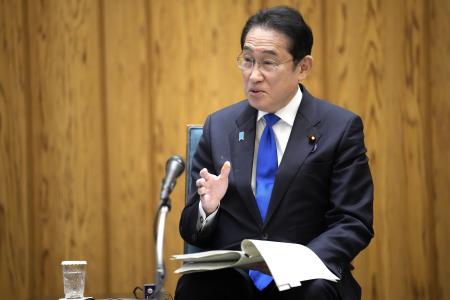
- ARAB NEWS
- 31 Jul 2025

TOKYO: A tax cut of 40,000 yen per person, much touted by the government of Japanese Prime Minister Fumio Kishida, will be implemented from June, as its economic impact, including on private consumption, remains to be seen.
Businesses and local governments are in the final stages of preparing for the tax cut, with officials involved in related work complaining about the administrative burden.
Kishida has stressed that the tax cut is designed to ensure income growth that outpaces inflation.
The tax cut is a temporary measure that will reduce income taxes by 30,000 yen and residential taxes by 10,000 yen over one year. The measure will apply to taxpayers with an annual income of 20 million yen or less and their spouses and dependents.
Salaried employees will see the tax cut reflected in their pay slips for June and later. Up to 30,000 yen will be reduced from income taxes for June, and if the tax amount is less than 30,000 yen, the remaining amount will be reduced in July and later. The residential tax section will be “0 yen” in June, and the annual tax amount minus 10,000 yen will be collected evenly for 11 months from July.
If the amount of paid tax is less than the tax cut, the difference will be rounded up and given in units of 10,000 yen.
The government expects the tax cut and wage growth to have a synergetic effect, helping to realize a virtuous economic cycle.
“By cutting taxes at a time when wage growth (reflecting pay hikes offered in this year’s “shunto labor-management negotiations) is becoming visible, we will dispel deflationary sentiment and support the economy’s transition to a new phase,” Finance Minister Shunichi Suzuki has said.
On the other hand, the tax measure, which combines tax cuts and benefits, is complicated, making companies and local governments extremely busy preparing for its implementation.
According to an estimate by Tokyo-based accounting software firm Freee K.K., it takes more than 40 hours in total for a company with about 100 employees to reflect the tax measure in salaries.
The National Tax Agency is promoting the tax measure on a special website and holding briefing sessions. However, many people complain that it is very difficult to understand because of many technical terms.
An employee in charge of labor management at a small company in Tokyo said that it is a source of concern that many of the company’s employees have side jobs, as such workers may receive the tax cut twice, at the company and at their second jobs.
The government decided on the tax cut late last year, and one ordinance-designated city started preparations in January. “Usually, there is about a year to implement a measure, but this time the system is complicated and the preparation period is short,” said an official of the city.
Officials at a ward office in Tokyo have been working on Saturdays since March and even during the Golden Week holiday in May, mainly to prepare notices to companies about the residential tax cut.
“We have made painstaking preparations, but I wonder how much gratitude people will feel when they see ‘0 yen’ (in the residential tax section) on their pay slips (for June),” a ward official said with a bitter smile.
JIJI Press